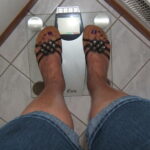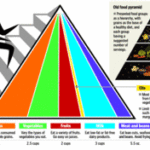This is a very common frustration among those of you who are desperate to lose a few pounds. You sincerely believe that you are doing everything right, but the scale stubbornly refuses to budge. What’s going on?
The most common problem is impatience. Some scale watchers start pondering the answer to this one after a week and wonder why all of this work isn’t melting the pounds away. They fail to understand that successful weight loss is slow, long term process.
A second problem is lack of progression. Novice exercisers mistakenly believe that if they do the same 30 minutes over the same distance in the same time, the physical benefits will continue to accumulate along with weight loss. Wrong! If you don’t continue to increase your workload, either through increasing distance, speed, or frequency of workouts, your body adapts and weight loss will stabilize. If you want progress, you need to keep challenging your body.
A third problem is lack of variation. I recommend one long, easier workout session per week, and one shorter, high intensity workout. It’s long been known that endurance runners burn fat more efficiently than non-runners, presumably linked to volume of training and long runs. Few realize, however, that high intensity training also gives your fat burning potential a significant boost.
Finally, the number of calories burned during exercise is often over-estimated. Total calories burned includes basal metabolic rate (BMR), or the number of calories expended when you are at complete rest. These calories are burned whether you are exercising or not.
Weight loss is dependent upon net calories burned, or total calories expended MINUS BMR. So forget the number you see on the treadmill or elliptical at the gym; that inflated number is significantly higher than your net calories burned because it includes BMR calories.
Let’s say you are a 150 pound 30 year old female that is 5’6″ tall. According to the Harris-Benedict equation, your BMR is 1,476 calories a day, or 61 calories an hour. So during a 30 minute workout, you need to subtract roughly 30 calories from whatever figure the treadmill gives you.
Researchers at Syracuse University have come up with the following formulas to estimate net calories burned for running and walking:
Running .63 x body weight (lbs) = net calories per mile
Walking .30 x body weight (lbs) = net calories per mile
Here is the shocker. The 150 pound female enjoys walking for exercise. If you multiply 150 x .3 , you get 45 net calories per mile. In order to burn off just 1 pound of body fat that contains 3,500 calories of energy, without changing diet she will need to walk 77 miles (3,500 divided by 45). And you wonder the weight is not coming off?
Walking is still the most popular form of exercise for weight loss and research supports its many benefits. To be effective for weight loss, beginners need to find a way to cut 300 calories a day out of their diet plus burn an extra 200 net calories, equal to about 4.5 miles of walking a day. That should enable them to comfortably lose 1 pound a week.
Remember, that 4.5 miles of walking does not have to be all at once. The walking miles you do throughout the day all count toward your total.
Now you can see why it may be tough to lose weight if all you do is walk 30 minutes a day.




